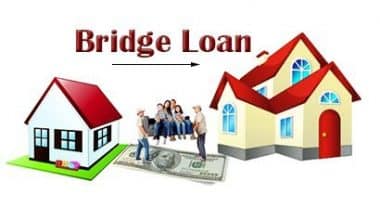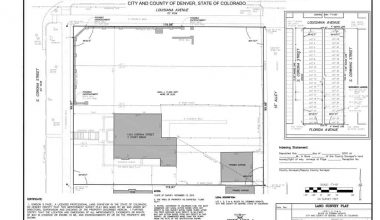One of the most important things in life is to have a proper and safe home where you can grow, develop, and take care of your family’s requirements. Some people take having a safe place to live for granted. This, however, is what gives you security and stability. This allows you to move forward and focus on the other fantastic challenges that life has to offer. You can’t really focus on your life when affordable housing is a problem. If this is the case, you might consider affordable housing. In this guide, we will walk you through all you need to know about affordable housing, its types, and how to rent the best of it.
What Is Affordable Housing?
According to the United States Department of Housing and Urban Development, affordable housing is defined as housing where the occupant pays 30% or less of their gross income on total housing costs, including utilities.
The phrase “affordable housing” is often used informally to refer to housing assistance for low-income individuals, such as housing vouchers or homes designed for inhabitants earning less than a set income for the area.
While 30% of gross income may be regarded as the benchmark for determining affordability, many households are obliged to spend much more than that for their home and utilities, and they may or may not be receiving housing aid to cover the high costs. Very low affordability is considered 60%.
In some circumstances, the situation is significantly worse. It’s astonishing that some families spend 80% of their income on housing.
Types of Affordable Housing Assistance
While HUD gives federal funding to states for housing aid, programs differ greatly between states, counties, and localities due to local laws and initiatives. Section 8 of the Housing Act of 1937 expressly referred to housing help, and while Section 8 has been periodically revised and developed in its meaning over the years, many people still use “Section 8” to refer to housing assistance or public housing, regardless of technical accuracy.
Here’s a rundown of some of the most popular types of affordable housing aid you might come across:
#1. Section 8 Housing Choice Voucher Program
This is one of the types of affordable housing and this program is funded by the federal government and distributed by each state to very low-income households. This program provides vouchers to qualified households to help them pay their rent. Voucher recipients are free to reside wherever they like.
#2. Section 8 Project-Based Rental Assistance
The Project-Based Rental Assistance program, which is also part of Section 8, is also government-supported and one of the common types of affordable housing. HUD enters into arrangements with property owners to designate some or all of the apartment units for qualifying low-income households, frequently in the very to extremely low-income levels. Participating landlords could be for-profit corporations or non-profit organizations.
#3. Public Housing
This is also one of the types of affordable housing and also a government-owned building is known as public housing. In many cases, public housing is federally subsidized, but the property is owned and managed by the city or county in which it is located, including evaluating and approving qualifying applicants.
#4. Mortgage or Down Payment Assistance
Government agencies ranging from the federal government to a single municipal offer program that can assist income-eligible families in obtaining homeownership through down payment or mortgage payment assistance. Depending on the program, this could take the shape of a specialized mortgage loan, a grant to the individual, or a different program from the individual’s preferred mortgage.
#5. Utility Assistance
Low-income households may be eligible for utility bill help from their local or state government, as well as from the utility provider directly. This is one of the types of affordable housing and this type of support can take the shape of a monthly subsidy or a one-time lump sum payment that covers several months.
#6. Privately Funded Housing Assistance
There are various private entities that provide support for low-income families, whether it’s a housing voucher, specific property, or down payment aid. These housing choices are frequently run by a charity or religious group that relies on private donations. If they do not receive public funds, their income eligibility may differ from your local government housing assistance eligibility.
Who Qualifies for Affordable Housing in the US?
Individuals and families who spend more than 30% of their income on housing may require affordable housing. Due to expensive rent, they may struggle to afford necessities such as food, clothing, medical care, or transportation. According to the Department of Housing and Urban Development (HUD), 12 million households (including renters and homeowners) spend more than half of their annual income on housing. As a result, a full-time worker earning the minimum salary cannot afford a two-bedroom apartment. However, this varies by city and is determined by the Area Median Income (AMI).
Based on where they reside and their income, the AMI decides who can afford to rent an apartment. HUD calculates the AMI for each region of the country, and a household is considered low-income if it earns less than 80% of the local area’s median income. Even if you or your family spends more than 30% of your salary on housing, this does not guarantee that you will be able to qualify for affordable housing. In fact, it is thought that if your salary is too low, you will be unable to afford a portion of the rent even if it is subsidized. This means that if you earn 50% or slightly more of the AMI, you may be ineligible.
What Is Affordable Housing Program?
Although there is a large demand for affordable housing, and some low-income families have been waiting for this type of home for years, it is more expensive to create than renters can afford. As a result, motivating developers to build more cheap units is difficult, especially if they can build more luxury buildings and charge high rents for these apartments. As a result, demand for affordable housing outnumbers supply not only in cities but also in the suburbs. Fortunately, there are organizations, such as affordable housing, that are attempting to address this issue through a variety of means, they include:
#1. Rent Control
Rent control regulates the frequency and amount of rent increases in order to keep disadvantaged people from being evicted. This is especially essential in locations where rents are rapidly rising, as is frequently the case in densely populated cities such as New York, Washington, D.C., and San Francisco. Rent control is implemented differently in different states and according to each affordable housing.
#2. Mixed-income Buildings
Certain units in mixed-income buildings are available to those earning between 30 and 60% of the AMI and are consequently charged less than market rent. Developers receive tax rebates, subsidies, vouchers, and other benefits in exchange for these units.
#3. Housing Vouchers
Housing vouchers are one of the most common forms of housing assistance in the United States. Families who receive these vouchers can choose the location and type of apartment they want to rent, and they will only pay 30% of their family income for rent because the voucher will cover the remainder. But, keep in mind that vouchers are limited, and some families may have to wait for years before they qualify.
How does Rent Control Impact Housing Affordability?
Rent control has a lot to do with affordable housing. At first glance, a “rent control” rule that limits the amount of rent a landlord may charge appears to make housing more affordable. Yet, economists frequently teach in Econ 101 that this is incorrect. Rent control rules, according to the argument, make housing less affordable by making it less profitable to create new apartments.
In theory, the Econ 101 argument is plausible, but it is unlikely to be a substantial factor in contemporary America. In the markets with the most severe affordability issues, it is usually zoning rather than rent regulation that limits affordable housing supply. Massachusetts, for example, abolished rent control fully in 1994. Despite growing home costs, this hasn’t resulted in a boom of high-rise buildings near Harvard Square, for the simple reason that high-rise construction violates zoning regulations.
How To Find Affordable Housing To Buy or Rent
Finding the perfect assistance program for you and your family can be difficult, but finding affordable housing to rent can be even more difficult. The following suggestions could help you narrow down your search:
#1. Evaluate the less desirable areas
Purchasing a property in a trendy, up-and-coming community can be very pricey. Alternatively, consider looking for a home in a neighborhood that hasn’t been gentrified.
#2. Make a budget for your home ahead of time
Don’t start looking at houses until you know exactly how much you can afford. This precaution can keep you from falling in love with an overpriced property.
#3. Rely on word-of-mouth
Many buyers utilize a multiple listing service (MLS) to identify a possible home, however, this database does not include all homes for sale. Request that your friends and family keep a look out for any for sale by owner properties (FSBO).
#4. Apply for a Section 8 voucher as soon as possible
You should submit your application early in the house-buying process because you will almost certainly be placed on a waiting list. You can then use the waiting period to look for a place to live.
#5. Look for a co-borrower or roommate
You can enlist the assistance of a spouse, friend, or family member to help you meet your monthly mortgage payments. If your co-borrower is low-income, they may also be eligible for further support programs.
#6. Check out local home buyer programs
Home purchasers will also be assisted by local NGOs and government entities. Grants, home improvement loans, and down payment help are examples of these schemes.
#7. Make use of a real estate agent
While skipping a real estate agent may appear to be a fantastic method to save money, you may end up paying more for a home without the assistance of a professional. Furthermore, most purchasers do not have to pay REALTOR® fees because the seller usually covers this cost.
#8. Make a deal with the seller
In a competitive real estate market, some buyers may feel pressed to accept a seller’s counteroffer very away. Therefore, don’t be scared to haggle the purchase price while still attempting to satisfy the vendor.
#9. Be flexible with your “needs” list
It’s easy to become fixated on your perfect vision of your dream home, but this approach can make finding an affordable property challenging. When looking at properties, be prepared to make concessions. Remember that you can always renovate or redesign later.
#10. Become a landlord
Several government-backed mortgages allow borrowers to buy multifamily properties. A VA loan, for example, may be used to purchase a home with four flats. So you can live in one unit while renting out the others to make a rental income. Investing in a cheap property like this allows you to earn a living while also providing housing for others.
How to Apply for Affordable Housing?
This is determined by the sort of inexpensive housing you want. If you are interested in public housing or Section 8, contact your state’s public housing agency. When it comes to inexpensive housing, look for an apartment complex or developers who provide it.
Is it Possible to Make Housing More Affordable?
Because of high property prices and loan rates, there is less homebuyer activity, which has slowed the pace of rising market values. This slowdown is expected to persist until there is a better affordability balance, which would be created by income and household wealth catching up with housing prices and loan rates.
Increasing housing inventory would assist to counterbalance the market’s current supply-demand imbalance, and analysts believe that supply is essential for improving housing affordability. Young believes that in order to create more homes, whether single-family homes, apartment buildings, or anything in between, local legislation must be changed to reduce the time and money required to construct residential housing.
What is Another Word for Affordable Housing?
Subsidized affordable housing (also known as “capital A Affordable Housing”) is housing that is made inexpensive by nonprofit or government subsidies rather than the private market.
What is the Difference between Affordable Housing and Social Housing?
Affordable housing is housing that is designed to be freely accessible to everyone, regardless of age or income. Social housing is solely provided by the government, yet you can have Affordable Social Housing, in which you own the property and rent the units to the government for social housing.
Who pays for Affordable Housing UK?
The federal government does. The government provides a Housing Grant to help people build affordable homes.
How much is Affordable Housing in California?
The National Low Income Housing Coalition (NLIHC) estimates that the Fair Market Rent (FMR) for a two-bedroom apartment in California in 2021 will be $2,030. A household must earn $6,766 per month, or $81,191 per year, to afford this level of rent and utilities without spending more than 30% of its income on housing.
What are the Types of Housing?
- Single-family home
- Co-op or condo
- Townhouse
- Multi-family home
- Accessory dwelling unit
- Modular home
- Mobile home
In conclusion
Finally, Low-income individuals and households require the same chances as everyone else, including safe and sanitary housing, homeownership, and the opportunity to develop wealth while owning. Yet, government-backed programs assist these people in finding more than just a place to dwell. It connects people with places where they can live.
Related Articles
- LOW-INCOME HOUSING: Affordable Housing Options In 2023
- HOUSING EXPENSE RATIO: What It & How To Calculate it
- Jumia Black Friday 2023: Best Deals, Phones, Offers & All You Need (Updated)
- HOUSING RATIO: How to Calculate Housing Ratio with Ease (+ Free Tools)
- Small Business Grants in UK 2023 (210+ Grants with Guide)






